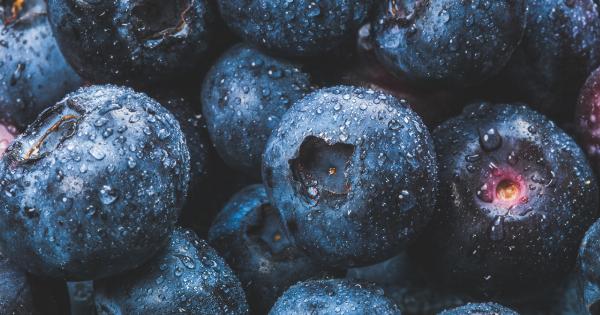In our daily lives, we consume various foods without giving much thought to their potential dangers. While many common foods are considered safe for consumption, there are hidden dangers lurking within them that can have a negative impact on our health.
These dangers are often disguised, making it important to be aware of the potential risks associated with the foods we consume regularly. In this article, we will explore unknown dangers disguised in common foods and shed light on how to mitigate or avoid these risks.
Sugar: The Silent Culprit
Sugar is a staple ingredient in many foods, ranging from sweet treats to savory dishes. While we may be aware of the harmful effects of excessive sugar consumption, there are hidden dangers in the form of added sugars that go unnoticed.
Many processed foods and beverages contain high amounts of added sugars, contributing to weight gain, diabetes, heart disease, and other health issues. It is essential to read food labels attentively and opt for naturally occurring sugars found in fruits and vegetables, rather than added sugars.
Trans Fats: Hidden Foe in Processed Foods
Trans fats are artificial fats commonly found in processed foods such as fried snacks, pastries, and margarine. These fats are created through a process called hydrogenation, which extends the shelf life of food products.
However, trans fats are harmful to our health, raising bad cholesterol levels and increasing the risk of heart disease. It is crucial to check food labels and avoid products that contain trans fats. Opting for healthier fat alternatives like olive oil or avocado can significantly reduce the intake of trans fats.
Misleading “Healthy” Labels on Packaged Foods
Many packaged foods are marketed as “healthy” or “natural,” leading consumers to believe they are making nutritious choices. However, these labels can be misleading as food manufacturers often employ clever marketing tactics.
Some products labeled as “low-fat” or “reduced-sugar” may compensate by adding higher amounts of unhealthy additives or artificial sweeteners. It is important to read the fine print on food labels, looking out for hidden ingredients that might not align with your health goals.
Genetically Modified Organisms (GMOs)
Genetically Modified Organisms (GMOs) are organisms whose genetic material has been altered through genetic engineering techniques. While the debate surrounding GMOs continues, some studies suggest potential risks associated with their consumption.
GMOs are commonly found in corn, soybeans, and other staple crops. To avoid the potential dangers of GMOs, opting for organic produce or foods labeled as “non-GMO” is a safer choice.
Pesticide Residues on Produce
Fruits and vegetables are essential components of a healthy diet, but they may harbor hidden dangers in the form of pesticide residues. Pesticides are chemicals used to control pests and diseases in agriculture.
However, residue from these chemicals can remain on the surface of produce, even after washing. Consuming fruits and vegetables with pesticide residues can pose health risks, including potential disruptions to the endocrine system and adverse effects on reproductive health.
Whenever possible, choose organic produce or thoroughly wash and peel conventional produce to minimize pesticide exposure.
Artificial Food Coloring: Not So Innocent
Artificial food coloring is a common ingredient found in many processed foods, candies, and beverages. These vibrant colors may make food more visually appealing, but they can pose health risks.
Some artificial food colorings contain chemicals that have been linked to hyperactivity in children and may exacerbate symptoms of ADHD. Reading food labels and opting for products free of artificial food coloring is advisable, especially for those with allergies or sensitivities.
Hidden Allergens in Packaged Foods
Food allergies and intolerances are becoming increasingly common, and hidden allergens can pose a severe risk to those affected. Packaged foods often contain traces of common allergens such as peanuts, tree nuts, gluten, dairy, soy, and shellfish.
Manufacturers are required to disclose major allergens on food labels, but trace amounts may still pose risks to individuals with severe allergies. It is essential to read labels carefully, especially if you have known allergies or sensitivities.
Sodium: A Stealthy Culprit
Excessive sodium consumption is a well-established risk factor for hypertension and other cardiovascular diseases. While we often associate sodium with salty snacks and processed foods, it can also hide in unsuspecting foods.
Many canned soups, sauces, salad dressings, and even bread contain high levels of sodium. Reading nutrition labels and opting for low-sodium alternatives can help regulate sodium intake and reduce the risks associated with excessive sodium consumption.
Hidden High-Fructose Corn Syrup
High-Fructose Corn Syrup (HFCS) is a sweetener commonly used in many processed foods and beverages. It is linked to obesity, insulin resistance, and other health issues.
While some foods blatantly state the presence of HFCS on their labels, it can often be found in unexpected places. Condiments, salad dressings, and even seemingly healthier items like yogurt can contain high-fructose corn syrup. Checking ingredient lists carefully and choosing products without HFCS is crucial for maintaining a healthy diet.
Processed Meats: A Hidden Danger
Processed meats, such as deli meats, sausages, and bacon, have become a staple in many diets. However, consuming these meats regularly comes with hidden dangers.
Processed meats are often high in sodium, saturated fats, and preservatives like nitrates, which have been linked to an increased risk of heart disease and certain types of cancer. Limiting the intake of processed meats and opting for leaner alternatives like turkey or chicken breast can significantly reduce the associated health risks.
Conclusion
While the foods we consume daily may seem harmless, there are often hidden dangers disguised within them.
From added sugars and trans fats to pesticide residues and artificial food coloring, being aware of these potential risks is crucial for safeguarding our health. By reading food labels attentively, opting for organic produce, and choosing products without harmful additives, we can reduce our exposure to these hidden dangers and make more informed choices about what we consume.
Remember, knowledge is power when it comes to protecting our well-being.































